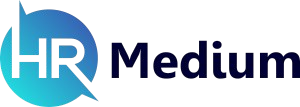HR professionals have a dearth of tasks, all related to helping the employees to manage their work better. They must constantly discover new ways to engage employees and improve their health, satisfaction, and work productivity. One strategy they can consider is incorporating workplace wellness programs.
Also Read: Creating Connections: The Key to Effective Employee Engagement
Learn about 3 successful examples of workplace wellness programs.
Understanding how a successful wellness program operates and is carried out is the key to developing one for your own organization.
Program 1: Targeting Health and Fitness
Employees, in the process of being productive, often overlook the importance of their overall health and fitness in enabling it.
Google, the tech giant, offers a comprehensive fitness program for their employees to promote physical activity. But they have the resources to provide expensive Zumba classes and fancy equipment.
How Can HRs Implement This
Start off by assessing the interest employees have in fitness activities. Post this, consider reaching out to local gyms for corporate partnerships.
Additionally, conduct regular fitness challenges for employees to participate in and win prizes. This motivates them to take a more active approach to their health and also boosts team spirit.
For example, having a step-count marathon is a fun way to pit departments against each other while improving an employee’s overall well-being.
Program 2: Providing Mental Health Support
Meeting deadlines and higher work productivity requirements contributes heavily to employee burnout scenarios. Physical health is one aspect of an employee’s wellness, mental health is another.
How Can HRs Implement This
Similarly to fitness programs, HRs can partner up with various local mental health professionals for regular counseling, training, and workshops.
May is Mental Health Awareness Month in the US, but support must be year-round. Actively engage and encourage your employees to make use of the resources provided. This helps destigmatize mental health issues.
Program 3: Flexible Work Schedules
The onset of the pandemic changed how work schedules are viewed and how work is done, forever. Many organizations now have flexible work schedules that allow workers to select when and where they work.
Work-life balance often used to be non-existent for many employees. Now, people are able to be satisfied with their jobs, while having a personal life.
How Can HRs Implement This
Naturally, not all roles can be remotely done at any time. HRs (and the firms) must assess what is the nature of work and identify roles that can fit into flexible work schedules.
Clear guidelines should be developed and made known to employees on this program. Finally, results matter most. Foster a culture that displays the same.

